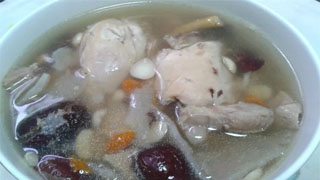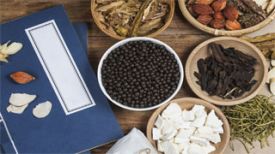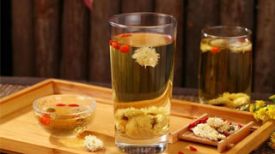
Banxia Xiexin Tang is a commonly used basic formula for treating stomach diseases in my clinical practice. It is a traditional Chinese medicine formula called "Jiehe". Banxia Xiexin Tang comes from the medical sage Zhang Zhongjing's Treatise on Febrile Diseases. The Treatise on Cold Damage: Distinguishing and Treating the Pulse Syndrome of Sun Disease "states:" If it is full but not painful, it is called Pi, and Chaihu is not suitable for it. It is recommended to use Banxia Xiexin Tang. "It is one of the classic prescriptions for treating the syndrome of coexistence of cold and heat, and the combination of deficiency and excess.
【 Composition of Soup Formula 】
Pinellia ternata 15, Scutellaria baicalensis 10, dried ginger 7, ginseng 10, roasted licorice 6 each, Huanglian 5g, and jujube 4.
Boil the water in the above ratio and take it
Analysis of Soup Formula
Banxia enters the lungs and spleen meridians, disperses nodules, eliminates stagnation, reduces nausea and vomiting, and is a medicinal herb for the emperor; Dried ginger is warm and can dispel evil, Huangqin and Huanglian are bitter and cold, and can relieve heat and eliminate Pi. It is a medicinal herb, while ginseng and jujube are sweet and warm, nourishing Qi, and tonifying the spleen. They are also used as adjuncts; Licorice is used to blend various medicines for medicinal purposes.
【 Health benefits 】
Banxia Xiexin Tang has the effects of regulating cold and heat, dispelling lumps and dispersing lumps. It is clinically used for the treatment of mixed cold and heat syndromes. The key points of differentiation are characterized by a feeling of fullness but no pain, vomiting, sharp bowel sounds, and a greasy and slightly yellowish tongue coating. It can treat patients with acute and chronic gastroenteritis, chronic colitis, chronic hepatitis, early liver cirrhosis, and other conditions related to weak qi and mixed cold and heat.
[Case Study]
Mr. Sun, 41 years old, has been suffering from stomach pain for 1 and a half years, with periodic attacks. He has been taking Western medicine for over a year and has not recovered. Through a friend's recommendation, he sought treatment from Yu. The chief complaint is burning pain in the upper abdomen after meals, which can be relieved by taking alkaline medication. Stomach distension, burning pain, noisy and sour, poor mental state. Previously, I underwent gastroscopy and barium meal examination at the municipal hospital and was diagnosed with active gastric ulcer. The patient's tongue coating is greasy and yellow, with a slow pulse. Diagnosed as gastric disharmony caused by long-term social dysfunction of the spleen and stomach, resulting from the combination of dampness and heat, it is recommended to relieve heat and dampness, and regulate yin and yang. Proposed modifications to Banxia Xiexin Tang, prescription: 15 parts of ginger and Banxia, 10 parts of ginseng each, 5 parts of Huanglian, 9 parts of dried ginger each, 10 parts of Huangqin, 6 parts of licorice each, 30 parts of Tubia cocos, 15 parts of Houpu, 15 parts of Chenpi, 15 parts of Atractylodes macrocephala, and 7 parts of jujube slices. Seven doses, one dose per day, concentrated decoction twice to 300ml, divided into two oral doses. The chief complaint of the second diagnosis is that there is fullness in the epigastric area, and the symptoms of burning pain and bloating have been reduced by 60%. The mental state has greatly improved. The prescription is ineffective. The original prescription includes 2 taels and 7 doses of Jinqiancao. The chief complaint of the third diagnosis is that the epigastric distension has disappeared, there is no burning pain or swelling in the epigastric area, and the acid reflux has disappeared. Later, the ulcer disappeared on gastroscopy, and no niche shadow was found on barium meal examination.


